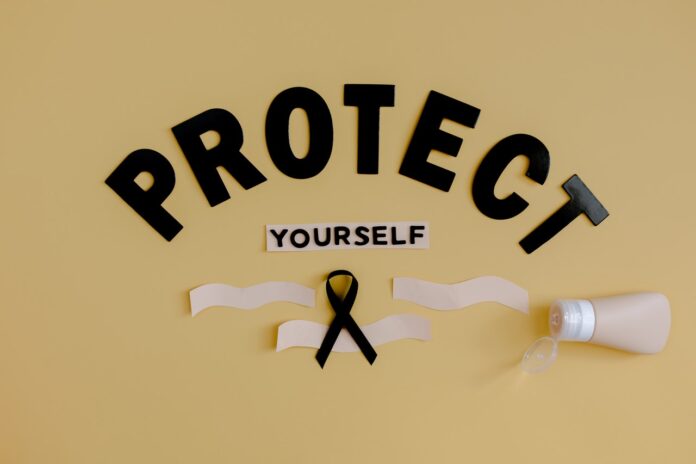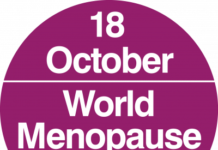Most of us are aware of the dangers of using sunbeds. But many of us choose to continue to use them anyway, choosing to believe that that ‘base tan’ glow is worth the risks, or buying into rumours that the vitamin D absorbed from the UV rays counteracts the dangers of using sunbeds.
Plus, in recent years there’s been a newcomer to the false tan market. Nasal tanning sprays involve inhaling chemicals that stimulate the production of melanin – the pigment that gives our skin that tan. These sprays have been linked not just to skin cancer, but also to kidney damage.
As holidaymakers prepare for their first summer holidays since lockdown, Google searches around the topic of sunbeds have increased drastically with some search terms increasing in popularity by 350%. In an effort to leave no room for doubt when it comes to sunbeds and their safety, Dr Arif Aslam, a consultant dermatologist at Spire Fylde Coast Hospital, has answered the top questions.
Sunbeds give out ultraviolet (UV) rays. Often these are stronger than the midday sun in popular tropical holiday destinations such as Sri Lanka, the Caribbean and South East Asia. As a result, sunbeds cause premature aging and increase your risk of developing skin cancer. For this reason, the Sunbeds (Regulation) Act was brought in in 2010, making it illegal for under-18s to use them.
What are the dangers of nasal tanning? (+50% increase in searches over the past month)
Nasal tanning is very risky, and your overall health is at serious risk if you use a nasal tanner. Your risk of skin cancer is increased and therefore, in the long term, there is a risk of your moles changing into unusual variants making it difficult to detect changes for melanoma. Nasal spray tan products are not licensed in the UK, which means they have not undergone rigorous safety testing. Apart from being linked to an increased risk of skin cancer, they are known to cause several other side effects including headaches, nausea, and kidney damage.
What happens if I use a tan accelerator whilst using a sunbed? (+60% increase in searches over the past month)
Using a tan accelerator and a sunbed at the same time can speed up the rate at which your skin darkens. However, these will significantly increase your risk of skin cancer whilst using tanning beds. Other side effects of oral tan accelerators include headaches, itchy skin, and nausea.
Are sunbeds good for your health? (+80% increase in searches over the past month)
Using a sunbed is not good for your health as it increases your risk of skin cancer. They emit the same type of harmful radiation as sunlight and could be even more harmful depending on other factors such as how strong the rays from the bed are and how often you use them. Tanning beds give out UV rays, and some might even be stronger than midday rays when they are at their strongest.
Can I use sunbeds whilst pregnant? (+100% increase in searches over the past month)
In short – absolutely not. Given that a woman’s skin is more sensitive during pregnancy, using a sunbed while pregnant is not recommended. Using a sunbed is not any safer than tanning in the sun and can cause greater damage to your skin as the levels of UV radiation released are the strongest.
The effect of using sunbeds on an unborn baby is currently unclear. Although some studies have shown a link between increased UV radiation and folic acid deficiency – folic acid is essential during the first 12 weeks of pregnancy but is broken down by UV radiation.
Are sunbeds THAT dangerous? (+130% increase in searches over the past month)
Using sunbeds increases your risk of developing skin cancer. This is because sunbeds release the same harmful UV radiation that the sun does, which damages your skin. Using a tanning bed just once increases your chance of developing skin cancer (Squamous Cell Carcinoma by 67%, Basal Cell Carcinoma by 29%, and Melanoma by 20%). If you use tanning beds before the age of 35 your risk increases significantly. Also, if you do not wear goggles while tanning in a sunbed, you can also damage your eyes which can cause retinal issues.
How many sunbeds should I have before going on holiday? (+350% increase in searches over the past month)
It is not recommended to use sunbeds at any time, including before a holiday, as using a sunbed increases your risk of developing skin cancer. Getting a “base tan” using a sunbed before going on holiday, does not provide any added protection from the sun, you are simply burning burnt skin. If you want tanned skin, a safer alternative is to use fake tan and use a strong SPF sun cream over it.
How can you reduce your risk of skin cancer?
Wear sunscreen
You should protect your skin from the sun whenever you are outside, especially during the summer, as most melanomas are associated with exposure to the sun’s ultraviolet rays. Use a high-factor sunscreen, ideally SPF (sun protection factor) 30 or higher.
Sunscreen can protect you against two types of UV rays — ultraviolet A and ultraviolet B rays. Be sure to apply a thick coat of sunscreen 30 minutes before you go outdoors to allow the cream to sink into your skin. Reapply after every two hours as sunscreen often breaks down with sun exposure or after sweating and swimming. Don’t forget to apply sunscreen on your legs, tops of your feet, ears, face, scalp, and neck. You can use a spray sunscreen for hard-to-reach areas such as your back or ask someone to help.
Stay in the shade during midday hours
The sun’s ultraviolet rays can reach you even on hazy and cloudy days, as they reflect off surfaces such as snow, sand, cement, and water.
Avoid direct sunlight between 10 am and 3 pm when the sun’s ultraviolet rays are at their strongest. Shelter under a tree, umbrella, or any other type of shade. As ultraviolet rays can reach your skin even when you are in the shade, you should still apply sunscreen.
Avoid directly exposing your skin
Clothing provides a barrier against the sun’s rays. The more skin you cover, the better. Dark-coloured clothes that are tightly woven provide more protection from ultraviolet rays than light-coloured, loosely woven clothing.
However, keep in mind that the SPF of a T-shirt is less than 15, so you shouldn’t rely on clothing alone — still use sunscreen. You can also invest in clothing specifically designed to protect you from the sun’s ultraviolet rays — clothing will be rated according to its UPF (ultraviolet protection factor), with a higher UPF providing more protection.
Wear a hat
Hats with broad brims will shade your neck, face, ears and eyes. The hat should cover your whole head. For the best protection, make sure your hat is made from a fine, tightly woven, dark fabric. Some hats also offer additional protection as they are made from fabrics with a high UPF.
Avoid straw hats as they have holes that allow the sun’s ultraviolet rays to reach your skin. Baseball hats provide limited protection, as they do not cover your ears. If you go outside wearing a baseball hat, apply sunscreen with an SPF of 30 or more to the back of your neck and ears.
Wear sunglasses
Protect your eyes and the sensitive skin around your eyes by wearing sunglasses on bright days all year round. Look for sunglasses that block 100% of UVA and UVB rays — this will reduce your risk of developing cataracts earlier in life. Wraparound sunglasses are ideal since they also block the sun’s rays coming from the sides.
Avoid tanning beds
There is no safe tanning bed, sun lamp, or tanning booth. Just one tanning session increases your chances of getting skin cancer. Exposure to the ultraviolet radiation emitted by tanning beds can also increase your risk of eye cancer and cataracts.
For further information click here Spire
Help keep news FREE for our readers
Supporting your local community newspaper/online news outlet is crucial now more than ever. If you believe in independent journalism, then consider making a valuable contribution by making a one-time or monthly donation. We operate in rural areas where providing unbiased news can be challenging. Read More About Supporting The West Wales Chronicle


























